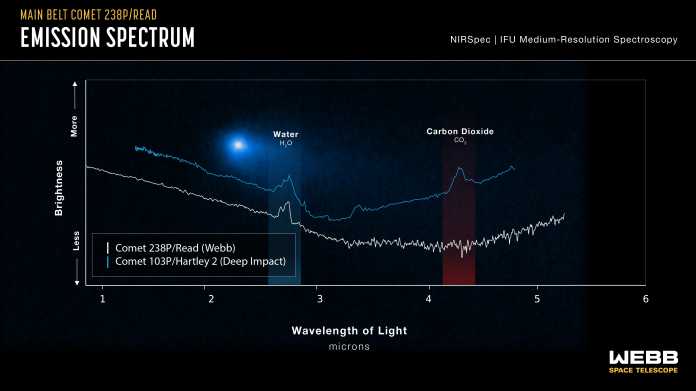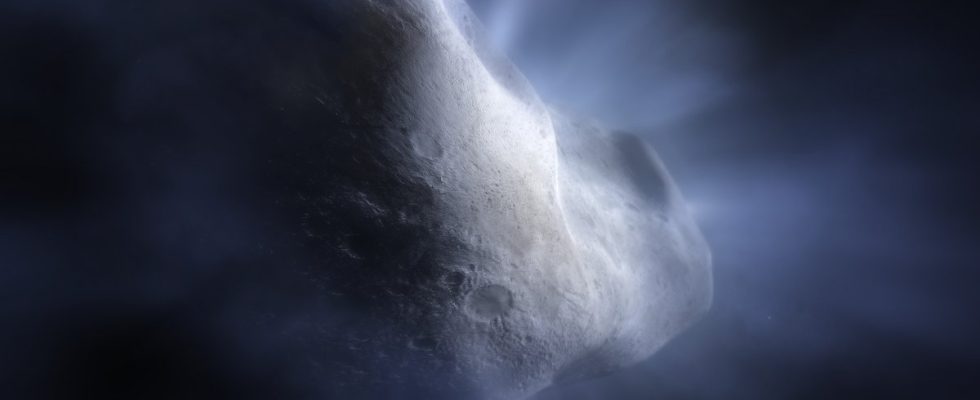The James Webb space telescope was the first to detect water on a main belt comet, thereby proving that the substance, which is so extremely important for life on earth, can actually survive inside the solar system. The vapor was found by comet 238P/Read, which, unlike most of the others, orbits the sun in the asteroid belt between Mars and Jupiter. So water can be preserved as ice in this region. This is another piece of the puzzle on the way to clarifying the question of where all the water on earth once came from. At the same time, 238P/Read has raised a new question.
Unusual Comets

Comparison of the spectra of 238P/Read and comet 103P/Hartley 2, as studied by NASA’s Deep Impact probe.
(Image: NASA, ESA, CSA, and J. Olmsted (STScI))
Main belt comets were only discovered a few years ago, explains the research team responsible for the find. Until then it had been assumed that all comets originated in the Kuiper Belt and in the Oort Cloud, from where they repeatedly visit the inner solar system. There they form the characteristic coma when the frozen material they contain evaporates. This also happens with the comets in the asteroid belt, but apart from that they are similar to asteroids, especially in terms of orbit. The James Webb Space Telescope (JWST) has now analyzed the composition of this gas using the near-infrared spectrograph NIRSpec.
Only with the new space telescope could the suspicion be confirmed that the gases that 238P/Read and the other main belt comets evaporate are water vapor. This is another long-awaited scientific breakthrough for astronomy. It is proof that water can also be found in the interior of the solar system. After the sun was formed, it was actually much too warm there and the water that was initially present here had evaporated – also on earth. The water, which is so abundant today, must have been brought here later and main belt comets could also help to clarify this riddle.
While the discovery of the water vapor was expected, 238P/Read also had a mystery. No trace of carbon dioxide was found on him. That usually makes up about 10 percent of the volatile matter in comets, the research group explains. They do not know why it is missing from the main belt comet. It is conceivable that the CO₂ has long since been lost because the temperatures in the interior of the solar system are higher than where comets usually travel. However, 238P/Read could also have formed in a comparatively warm area of the solar system where there was no carbon dioxide.
The James Webb Space Telescope, operated by the space agencies NASA, ESA and CSA, was launched on December 25, 2021. After a complex procedure of self-unfolding, it arrived at the L2 Lagrange point a month later. Here it looks away from the sun, earth and moon into space so that their thermal radiation does not disturb the infrared telescope. A huge protective screen blocks them. Analysis of 238P/Read is now being presented in the journal Nature.
(mho)

